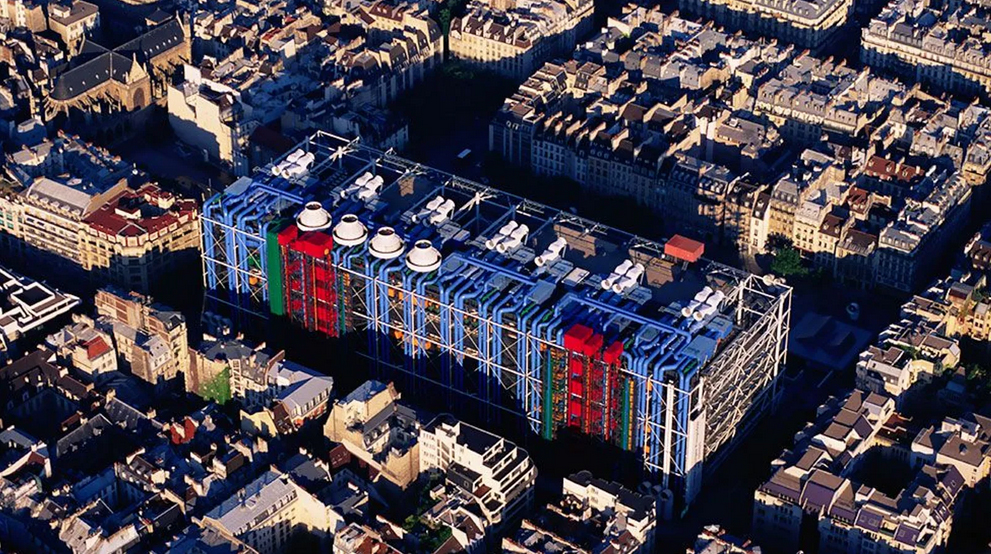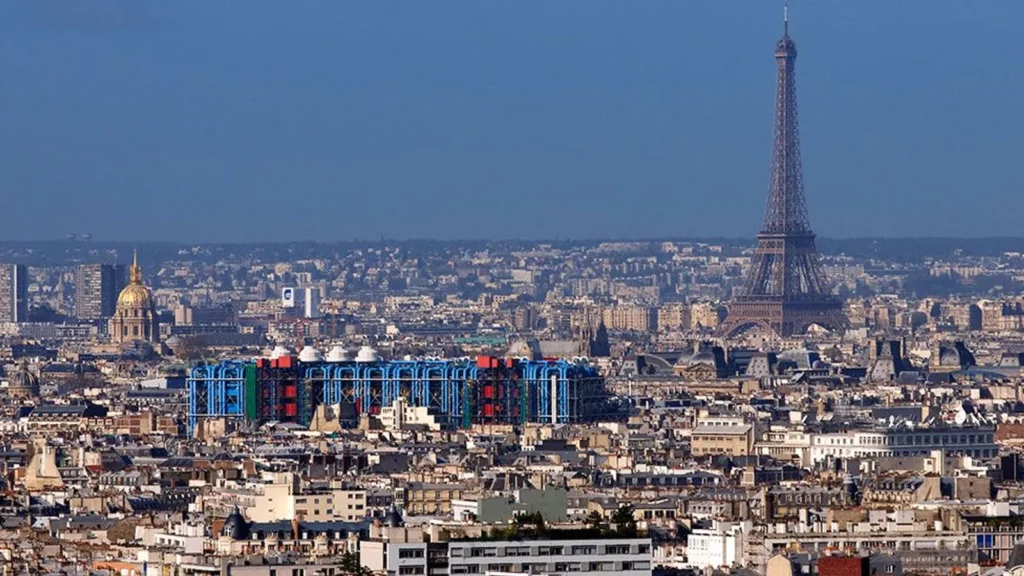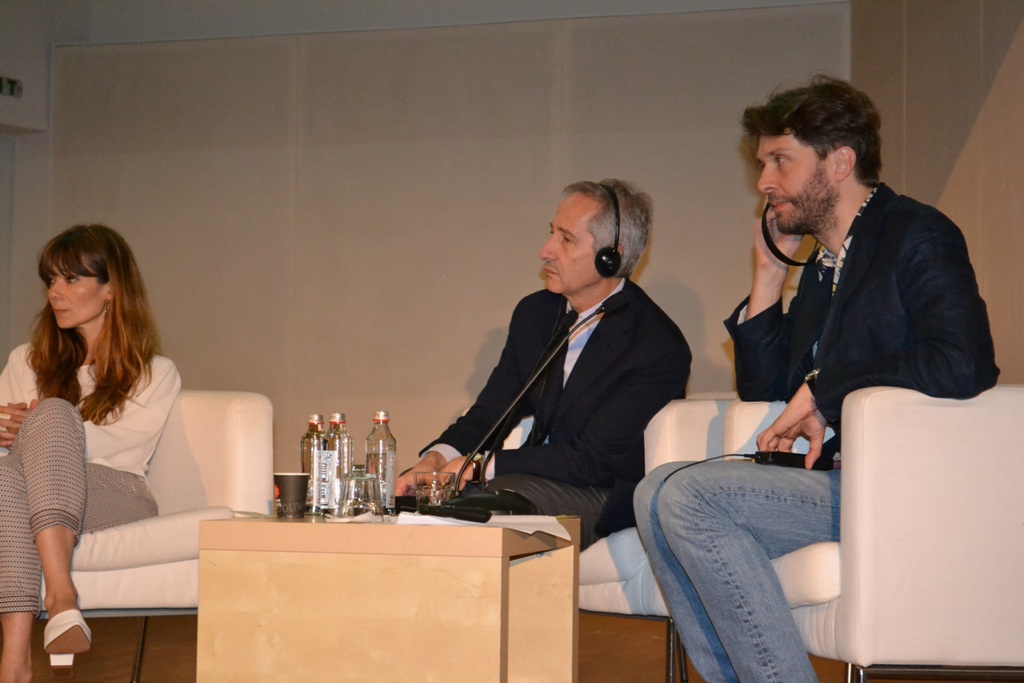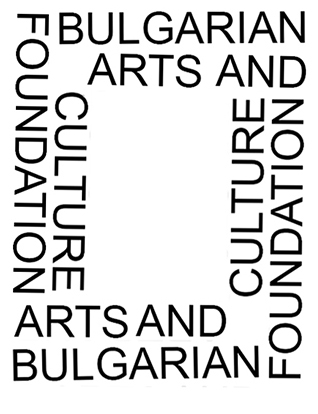Creation and donation of a collection of contemporary Bulgarian art to the Georges Pompidou Center, Paris.

The works of Bulgarian artists that are present in the collections of major international museums are rare exceptions. As a result, Bulgarian art is practically excluded from the historical narrative of European art. Very little is still known about it, its place in the context of world art has not been analyzed.
The problem of historicizing Bulgarian art concerns not only the past. It is one of the reasons why Bulgarian authors today are generally poorly represented on the international art scene, compared to their colleagues from other Eastern European scenes, for example.
The goal of the project for the donation of contemporary Bulgarian art to the Georges Pomidos Center, Paris is to fill these gaps by offering works of Bulgarian contemporary art to one of the largest and most prestigious museums in Europe and the world.
The donation of a collection of contemporary Bulgarian art is a cause of national and public importance for Bulgarian art and culture. The collection has the potential to draw attention to Bulgaria, its history and modernity, and to include it in the overall historical reading of European and world culture. The act of donation to the Pompidou Museum and the very process of creating the collection are an example of patronage and an opportunity to promote the role of private organizations and donors in culture, as well as to demonstrate the possibilities for cooperation with world museums - examples that are still dramatically lacking in the Bulgarian environment.
The Pompidou Center, Paris
The Centre Georges Pompidou, Paris houses several institutions, the most important of which is the National Museum of Modern and Contemporary Art of France, with which the general public around the world identifies the Pompidou. The museum has the largest collection of modern and contemporary art in Europe, considered by specialists to be the most precise. It is among the three most important world museums in this field – along with the Tate Modern in London and the MoMA in New York, and is visited by 1.5 million viewers annually.

In recent years, the museum has sought to broaden its focus, including in its collection and exhibitions more and more works from various local, previously neglected scenes. To this end, the permanent exhibition changes several times a year to present different readings of historical and current trends in European and world art.
Several major donations of works from Eastern Europe to the Pompidou have attracted the attention of viewers and the media, renewing the interest of the general and specialist public in the art of these countries. Among them, the largest is the donation and exhibition “Collection!” of Russian art from the Potanin Foundation in 2016.
History and context of the donation project
With the exception of works by Christo and Jeanne Claude, the Pompidou possesses only a few works by contemporary Bulgarian artists – a series of drawings by Nedko Solakov, and the Center’s video archive contains two video works by Krasimir Terziev. However, they are categorically insufficient for a more comprehensive understanding of Bulgarian contemporary art and so far do not allow its inclusion in thematic or historical exhibitions, catalogs or conferences, let alone its appearance in the museum’s permanent exhibition. For example, when in 2010 the Pompidou presented a large-scale exhibition of art from Eastern Europe “Les promesses du passé 1950-2010”, it did not include a single work by a Bulgarian artist.
In 2017, following an invitation from art historian Desislava Dimova, the Centre Georges Pompidou, represented by its then director Bernard Blistin, officially confirmed its interest in a joint study of Bulgarian art. The ultimate goal of this study was to identify the possibility of creating, based on donations, a collection of contemporary Bulgarian art (according to the museum classification, these are works created after 1960), which would take its place among the world's productions in the museum's collection.
To announce the project, the Director of the Center, Bernard Blisten, arrived in Sofia in June 2018, along with the curators responsible for the project from the French side, Nicolas Liuchi-Gutnikov and Karolina Levandovska. The visit was organized with the assistance of the MUSIZ Foundation, Sofia Municipality, Ministry of Culture, and others.

Desislava Dimova, Bernard Blisten and Nikola Liuchi-Gutnikov present the project to a Bulgarian audience at the French Institute, Sofia, 2018.
Based on the research conducted between Bulgarian and French researchers, in early 2020, Nikola Liuchi-Gutnikov identified works by Bulgarian authors that were of interest for acquisition by the Center. This list was presented for consideration and accepted by the two committees responsible for approving the donation – the Scientific Committee and the Acquisitions Committee.
The project was interrupted in March 2020 in its final phase due to the pandemic.
The project today
In August 2022, after meetings between Desislava Dimova and the new leadership of the Pompidou Center, the project was confirmed and renewed by the current director - Mr. Xavier Re. Nicola Liuchi-Gutnikov remains the responsible curator for the project on behalf of the Pompidou.
In Bulgaria, the continuation of the project is managed by the Bulgarian Art and Culture Foundation, established by Desislava Dimova in early 2022. The Foundation was created specifically for the purposes of the project - raising funds and organizing the donation with maximum publicity and transparency, and in full compliance with Bulgarian laws. The legal consultant of the project is the law firm "Dzhingov, Guginski, Kyuchukov and Velichkov".
The Director of the Pompidou Center, Mr. Xavier Re, expressed his desire to get to know the Bulgarian art scene closely and to personally support the project during a visit to Sofia planned for February 2022.
His visit is organized by the Bulgarian Art and Culture Foundation, in cooperation with the French Institute in Sofia, as well as with the support of the Art - Works and Documents Foundation and the DOMA Foundation.
The process of art historical research, curation of the donation and its exhibition, as well as the organization of the donation procedures is led by Nikola Liuchi-Gutnikov for the Pompidou Center, Paris and Desislava Dimova on the Bulgarian side through the Bulgarian Art and Culture Foundation.
What does the donation to the Pompidou essentially represent ?
Over 30 works were discussed for donation with the Pompidou curators. Of these, 12 works by 7 artists were identified by the museum's experts as works of undisputed interest for the Pompidou collection.
The renewal of the project and the expressed interest of the Pompidou Center and its new director allow us today to offer an expanded list of authors and works, with the goal of including in the donation a minimum of 10 authors with about 20 works, among whom to present more female authors.
To this end, Desislava Dimova and Nikola Liuchi-Gutnikov, in consultation with Bulgarian colleagues, will conduct a study in the coming months to identify additional authors and works. “Passports” of the proposed works will be prepared for their presentation to the committees.
The donation procedure itself includes purchasing the selected works at preferential prices.
The purchased works are donated to the Pompidou Center with a donation contract, transported to Paris, where they are registered with inventory numbers and passports in the museum's collection and the register of French national museums. The donation will be presented in an exhibition dedicated entirely to it (with a catalog) in the Pompidou halls in Paris.
Recognition for the donor
- By donating to the Pompidou, the donor's name is associated with the corresponding work in the register of the Pompidou collection, as well as in the national register of museums of France.
- Whenever a specific work is exhibited or reproduced, the name of the donor appears alongside the title and the author's name.
- The Pompidou Center presents the donation with an exhibition in its halls in Paris.
- The sponsors and donors are announced in all information and press materials related to the announcement of the donation and the exhibition.
- Their names are also present in the exhibition hall itself and in the exhibition catalog.
- The Pompidou Center has an audience of millions who are potential viewers of the donation in Paris. The exhibition is also expected to take place around the 2024 Summer Olympics in Paris, suggesting increased media and viewer interest beyond the boundaries of art.
The donation process
- After the curators provide an updated list of works, the Scientific Committee and the Acquisitions Committee of the Centre Pompidou approve the works proposed for donation at their sessions – one in spring (usually in April or May) and one in autumn (usually in October-November). After the approval of the Scientific Committee and in consultation with the Director of the Centre, the purchases can proceed, pending final confirmation by the second committee.
- The donor receives an official letter from the director of the Pompidou stating that the works he wishes to donate have been approved for acquisition by the Center.
- A donation contract is signed with the Pompidou Center.
- Transport of the works to Paris. Includes insurance, packaging, preparation of acceptance and delivery protocols.
- The donor receives recognition in the form of a letter from the President of the Pompidou Center, Laurent Le Bon, which describes the donor's name and the inventory number under which each work will be indexed in the museum's collection and in the register of national museums of France.
Upcoming project milestones and deadlines
- Visit of Xavier Re and Nikola Liuchi-Gutnikov to Sofia. Visits to artists' studios. Meeting with donors. Guidelines for the research of additional works for the collection. (February 2023)
- Research of authors and works led by Desislava Dimova and Nikola Liuchi-Gutnikov. Preparation of a list and passports of the works. (March-May 2023)
- Presentation of the works to the committees at Pompidou (May-November 2023).
- Official confirmation of the donation, its preparation and its departure to Paris
- Exhibition of the donation in the Pompidou halls (2024)
The research process and selection criteria
The study is led by art historian Desislava Dimova from the Bulgarian side, and the curator from the Pompidou Center – Nicolas Liuchi-Gutnikov. The aim of the study from the Bulgarian side is to offer the broadest possible view of Bulgarian art and the widest possible spectrum of authors and works. To this end, the study will consult with various experts and specialists, actively engaged in the contemporary Bulgarian scene and specialized in art from the second half of the 20th century to the present day.
On this basis, Pompidou experts will make a final selection.The final selection depends entirely and solely on the Centre Pompidou.and is officially carried out at three levels – a curator from Pompidou, a Scientific Committee and an Acquisitions Committee.
The requirements of a museum collection are specific and the selection for it differs greatly from that for an exhibition, for example.
Initially, the selection is limited to authors who already have a place in contemporary Bulgarian art history, are known outside the country, or if not – have received significant recognition in Bulgaria. All this must be confirmed by the artist’s biography – exhibitions in institutions, catalogues, essays and art-historical studies.
In the second stage, works that are key to the author, of significance for the history of Bulgarian art, and works that have participated in important exhibitions in Bulgaria or abroad must be identified in the work of these authors. These works must also be available for acquisition – from the author, a private gallery or a collector. Works that are already part of public museums and collections cannot be proposed.
An additional difficulty is the need for works, when in print, to be in their original print run (for example, a photograph from 1970 can only be acquired in an original 1970 copy, not in a new print run). This is a challenge for a large part of the works of the Bulgarian neo-avant-garde from the 1970s and 1980s, many of which are not well preserved, the authors themselves were not strict about print runs, and it is not documented how many copies the work has already been distributed. Some authors even reworked the works later.
Last but not least, one of the museum's considerations is that the works can enter into a dialogue with the existing museum collection. The question that the museum asks with every choice is – in what exhibition, with which other works from the collection could we include this work? This guarantees that the work will be in active contemporary "use" and will not lie forgotten in the depots.
Determining the price of works
The price of the works is determined by the authors or their galleries when they are represented by galleries. It is compared and possibly updated against the real market price of the artists with the help of experts.
Given the cause and prestige of the donation, as well as existing standard practices, we expect a realistic discount in the price of each work. There is a possibility that, upon redemption, an additional work may be donated by the author. The final decision on this depends on the interest of Pompidou in the works and the capabilities of the authors.
With attention and respect to the contemporary art scene in Bulgaria
Although the final choice depends entirely on the Centre Pompidou, from the very beginning of the project, efforts were made to engage and respect the guild, and to make the research process as inclusive as possible.
In addition to the fact that various specialists were and will be consulted again - from art historians and curators to private gallerists, the study included the widest possible groups of artists and trends in Bulgarian art. Before 2018, they were presented in exhibitions specially prepared for the curators' visits, visits to studios, or with catalogs and art history texts. The study in its first phase covered the widest possible range of "contemporary" - from the 1960s to the present day. This allowed for the inclusion of authors and works that art history does not consider as contemporary, because they are related to the issues of the socialist art period. The unofficial, avant-garde experiments in Bulgarian art from the 1980s were also covered. The curators and the director of the Pompidou visited all important exhibitions and public and private art institutions in Sofia.
In July 2019, Desislava Dimova presented the research guidelines to a wide audience at the Sofia City Art Gallery.
To show the same attention and support to the guild in the second stage of the project, we have planned an exhibition and lectures that will present the results of the overall research on the project, regardless of the final choice of Pompidou. In this way, a larger part of contemporary Bulgarian artists will be included, even if their works do not manage to enter the collection at this stage. Curators are Desislava Dimova and Vera Mlechevska. The exhibition and lectures are realized in partnership with the DOMA Art Foundation at the Doza Gallery in March-April 2023 and are supported by the Visual Arts program of the Ministry of Culture.
